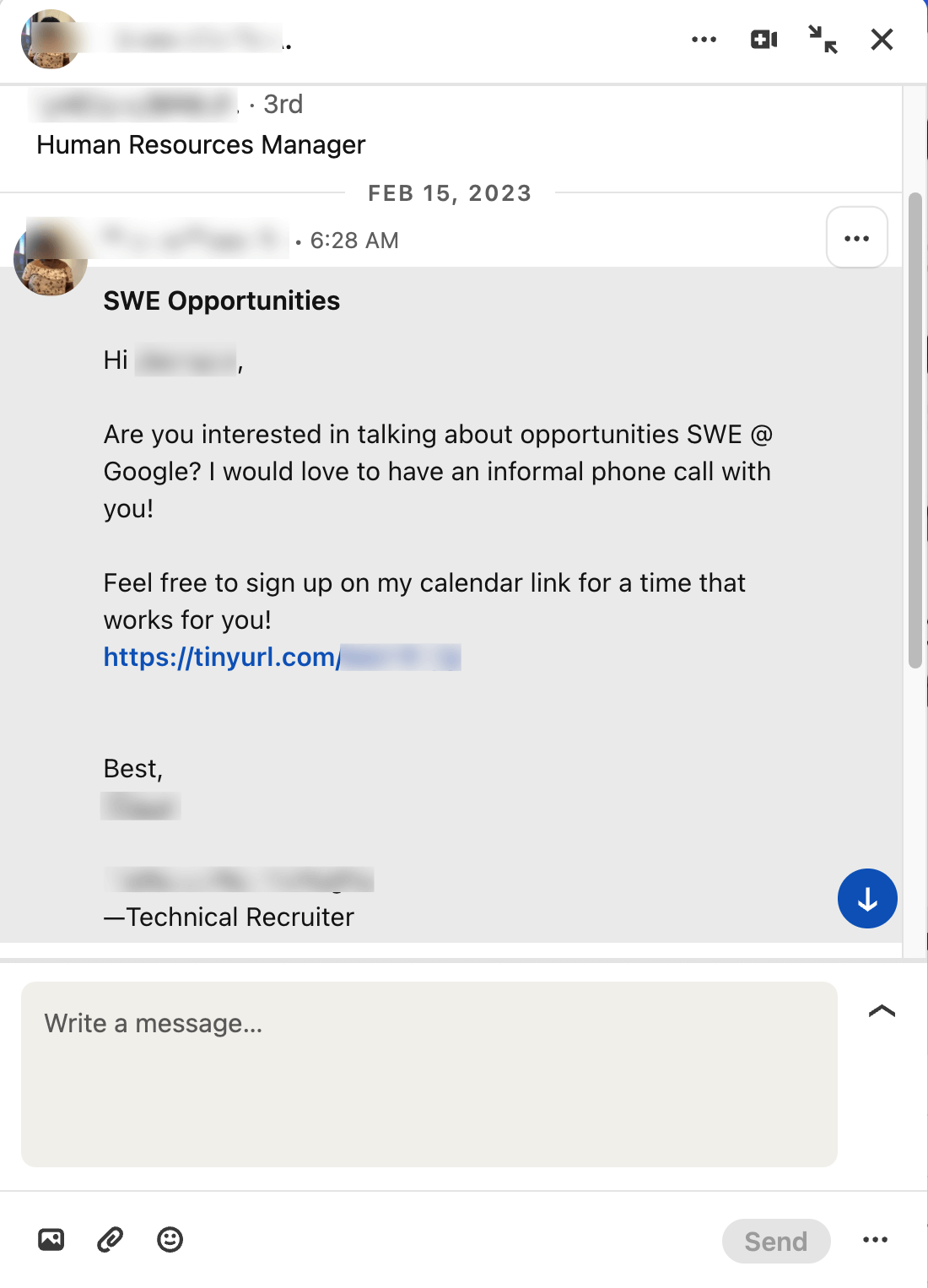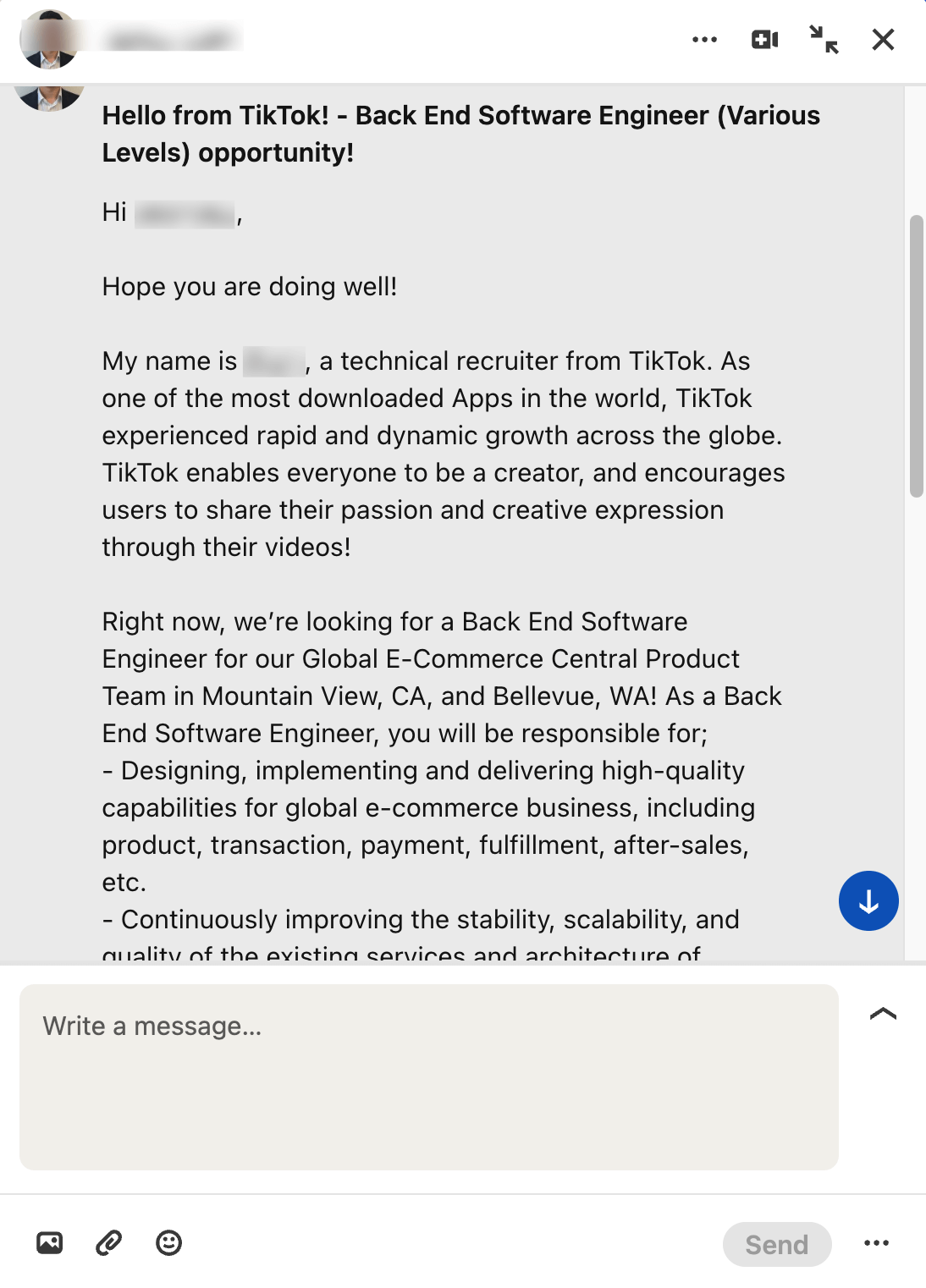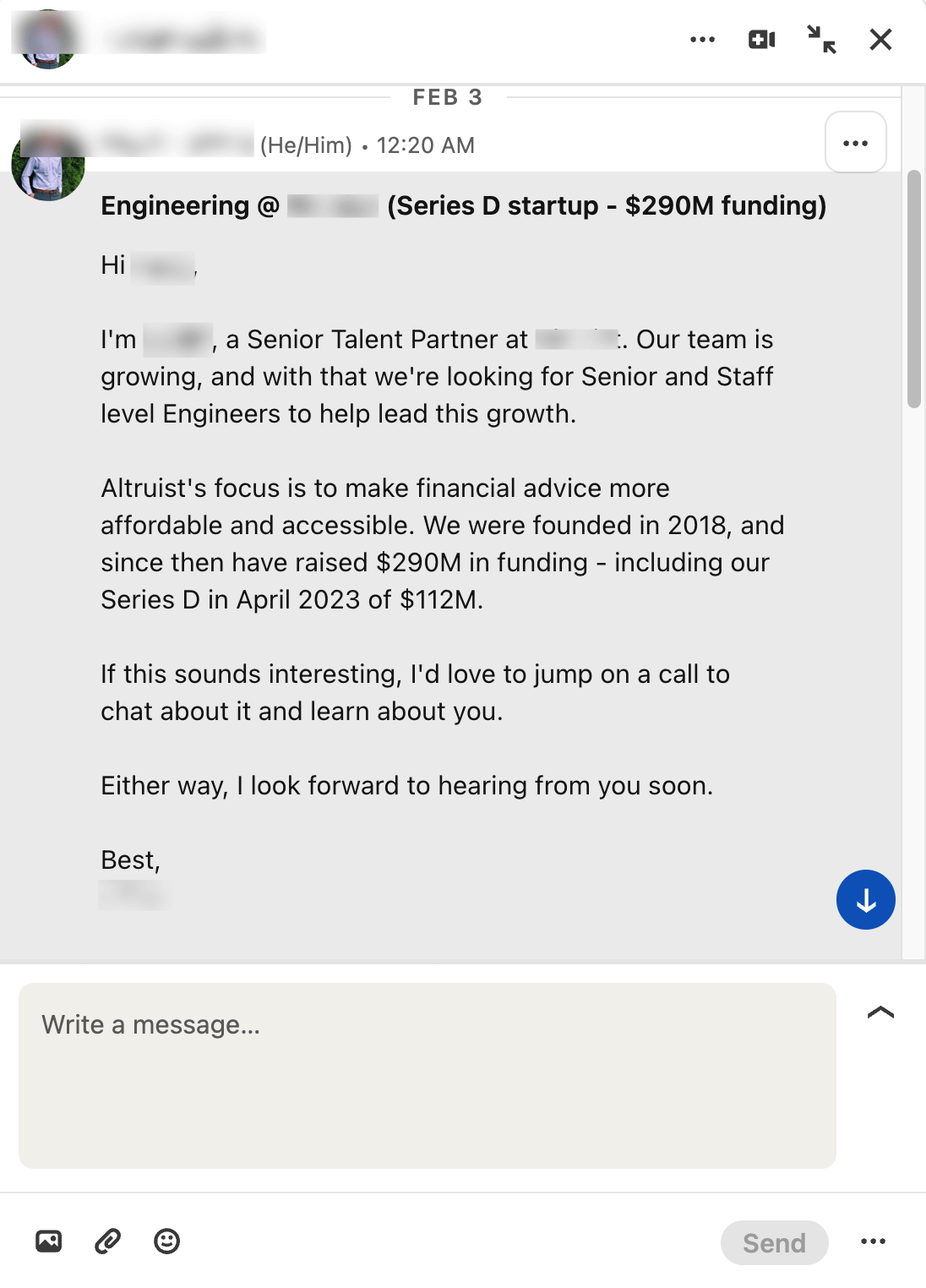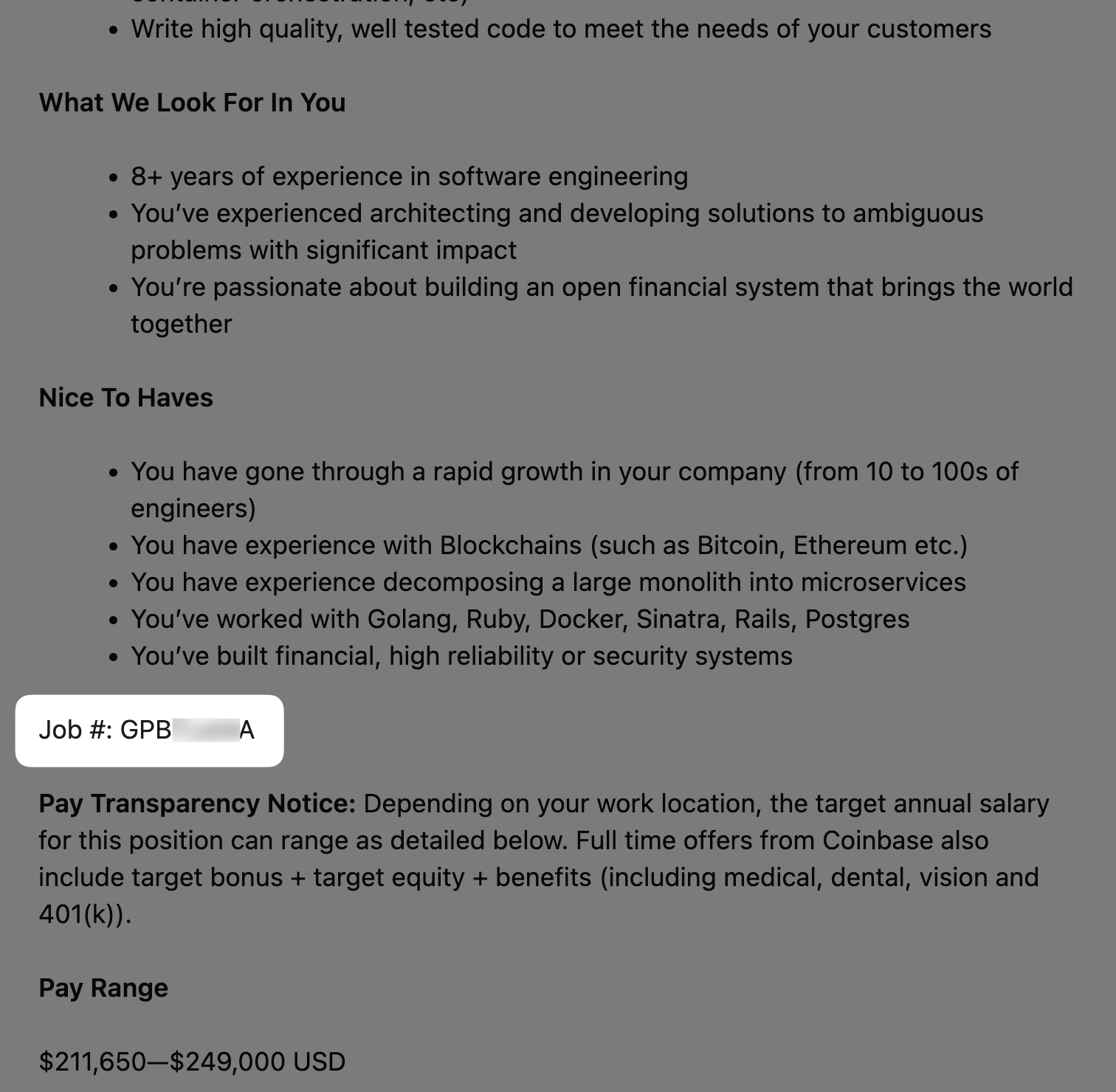🚥 Hiring Process
There are 4 different hiring processes:
Inbound: Candidates directly submit their resumes.
Outbound: Recruiters or sourcers reach out to potential candidates, often through LinkedIn.
Platform: Applications are submitted through job boards.
Referral: Current employees recommend potential candidates.
📮 Inbound Process
Job Description Creation
Commonly known as a JD, job description is usually crafted through these steps:
- The hiring committee (including Hiring Manager, HR, Engineering Manager, and CTO) determines the required roles and the number of positions to be filled.
- The hiring manager collects and refines the job requirements from each team lead or manager.
- The hiring manager either writes the job description themselves or seeks help from a recruiter or staffing agency.
Job Posting
The job opening is posted on Applicant Tracking Systems (ATS) and various job board platforms (LinkedIn Jobs, Indeed, etc.), making it available for applicants to apply.
Resume/Application Submission
Applicants submit their resumes and applications through different platforms.
ATS Filtering
The resumes submitted by candidates are filtered and sorted through the ATS.
For more details on ATS filtering, check out 🤖 Understanding ATS.
Resume Review by Recruiter
Resumes filtered by the ATS are initially reviewed by the recruiter, who evaluates the following:
-
Does the applicant meet the criteria defined by the Hiring Manager?
- e.g.,
At least 5 years of experience,Required experience in Distributed Systems,Proficiency in React.js, etc.
- e.g.,
- Is the candidate capable of performing the job responsibilities?
- Is the candidate worth inviting for an interview?
Recruiter Call
The recruiter holds a short call or Zoom meeting, usually lasting 15 to 30 minutes, to verify key information and determine if the candidate should move forward in the process:
- Confirm important details from the resume, such as experience, tech stack, and basic communication skills.
- Verify additional information not on the resume, like visa status or location.
- Ensure the candidate meets the essential requirements outlined by the hiring manager.
- Check if the candidate’s expectations align with the open position.
- Assess the candidate’s job search status and availability.
OA (Online Assessment)
Since hiring managers, such as Engineering Managers or VPs of Engineering, often handle recruitment alongside their main responsibilities, companies use online assessments to screen technical skills and save the hiring manager’s time by filtering out unqualified candidates.
These assessments vary by company but often include algorithm and data structure coding tests similar to LeetCode. Other formats may include mini-projects, pair programming, low-level design challenges, or technical quizzes
Resume Review by Hiring Manager
The final stage of resume evaluation is conducted by the hiring manager. Resumes of candidates who pass the recruiter call and online assessment are forwarded to the hiring manager for further review. Only those who clear this stage advance to the interview process.
In some companies, the hiring manager might skip the resume review entirely and move directly to the hiring manager interview stage.
Hiring Manager Interview and Next Steps
The hiring manager interview is the final stage of resume-based evaluation. The depth of questions about work experience and technical skills can vary depending on the hiring manager’s expertise, and the interview typically lasts less than an hour.
If the candidate passes this stage, the company commits more resources—such as time and interview costs—into the full interview process, which may include live coding, system design, and behavioral interviews.
💬 Outbound Process
Recruiters or sourcers might still reach out to you proactively on LinkedIn (outbound) even if you haven’t submitted a resume. This is known as the outbound process.
The outbound process has a higher chance of leading to an interview compared to the Inbound process because recruiters have already reviewed your LinkedIn profile before reaching out. 👍
Here’s a typical outbound hiring process:
Initial Contact and Recruiter Call Proposal
- Recruiters or sourcers reach out to you via LinkedIn DM, email, or phone call.
- They provide a brief overview of the job or open position and ask questions about your job search status, current role, and the type of position you’re looking for.
- If you express interest in the role and are actively job hunting, the recruiter will suggest setting up a call.
- The recruiter might send a scheduling link for the call immediately or after a brief initial conversation.



Scheduling the Recruiter Call
-
Recruiters often use tools like Calendly to share their availability, allowing you to select a time that works for you.
-
Once the call is scheduled, the recruiter may ask you to submit your resume through the communication channel used or via email.
-
To share with the Hiring Manager
- A PDF resume is preferred over a LinkedIn profile for internal sharing.
- To register in the company’s ATS
- To verify information not visible on your LinkedIn profile
-
To share with the Hiring Manager
Recruiter Call
Submitting Your Resume
- You’ll submit your resume via email or LinkedIn DM after the initial communication.
Recruiter Shares Resume with the Hiring Manager
- The recruiter will pass along your resume, along with the details from the call and their evaluation, to the Hiring Manager.
Next Steps
- The recruiter will either inform you of the next steps or, in some cases, stop responding (ghosting).
🌎 Platform Process
Job platforms serve as a bridge between companies and candidates, and the process is usually simple:
- Candidates upload their profiles and resumes to the platform.
- How the platform works can vary:
- Some platforms display all job listings, letting candidates browse and apply directly, like a traditional job board.
- Others recommend jobs based on the candidate’s preferences and criteria.
- Some platforms also suggest candidates to companies.
- From there, the process usually progresses to a recruiter call and then moves through the usual hiring stages.
Popular Job Platforms for Software Engineers
- LinkedIn Jobs
- Welcome to the Jungle (formerly Otta)
- Indeed
- Wellfound
- ZipRecruiter
- Hired
- Blind Jobs
- Glassdoor Jobs
- GenValues
- Monster
- CareerBuilder
- SimplyHired
- GameJobs - for game developers
Job Platforms for Students and Internships
Exclusive Platforms
Recently, referral-based platforms like Tofu have emerged, where you need a referral from a company in the network to join.
As an early Tofu user, I noticed that the limited number of companies in the network initially meant fewer job opportunities, but it seems that more companies are being added over time.
Since this platform was created by a venture capital firm to support hiring for its portfolio companies, it raises questions about its long-term sustainability.
🤝 Referral Process
A referral happens when a current employee recommends a candidate to their company, and it usually provides the best chance of getting past the resume screening stage.
The typical referral hiring process is as follows:
Share the Job Posting with the Employee
- Typically, you share the Job ID or the job posting link from the job description.
- If the job isn’t publicly listed, the employee can share your details directly with the recruiter or hiring manager.
- Example of a Job ID 👇

Employee Verifies Referral Eligibility
- Each company has its own referral policies and conditions, and a referral can only happen if these criteria are met.
- Some companies require the employee and candidate to have previously worked together.
- For certain positions, only candidates with specific experience or technical skills might qualify for a referral.
- Candidates who were rejected after interviews within the past year (or a set timeframe) may not be eligible for referral.
Referral Submission
- The process for submitting a referral varies by company:
- The employee might provide you with a referral application link to apply directly.
- The employee could submit your resume and details through the company’s referral system, often using an ATS.
- The employee may also forward your contact information and resume directly to the recruiter or hiring manager.
Next Steps (Varies by Company)
- What happens next depends on the company’s process:
- It might start like a regular application, beginning with a call from a recruiter.
- In some cases, the process might skip ahead to an online assessment or an interview with the hiring manager.
- (Rarely) It could even start directly with an on-site interview.
- Sometimes, the process may be unexpectedly halted without any follow-up (ghosting), and no formal rejection is provided.